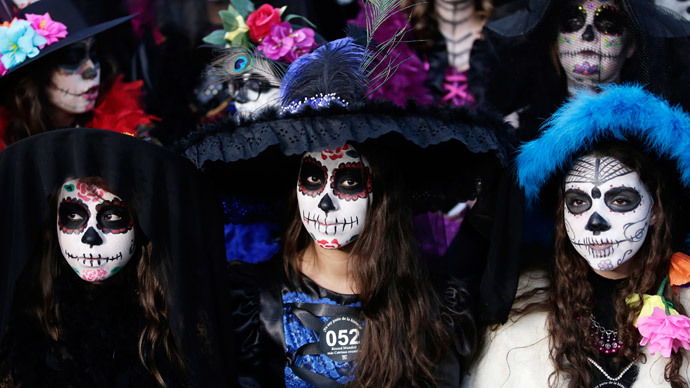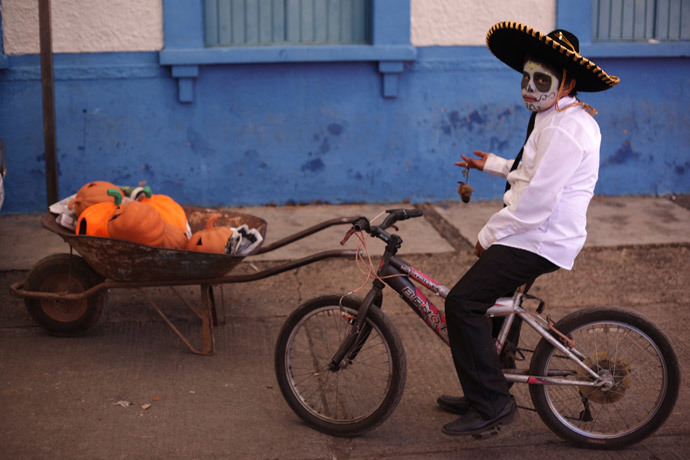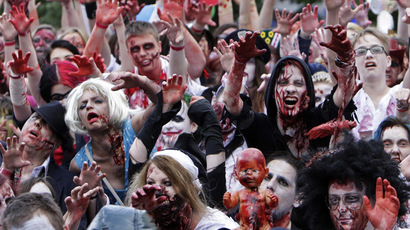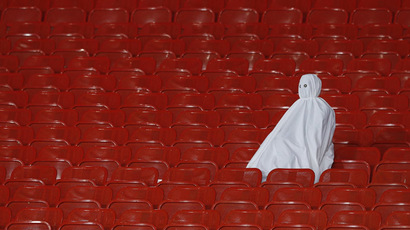Why the Day of the Dead is not Halloween (PHOTOS)

Skulls set on shrines, candles flickering in the dark while skeletons converge on the streets...Halloween? No. The biggest fright night of the year gives way to the Mexican tradition of celebrating the dead.
The Day of the Dead, or Día de los Muertos, is annually celebrated for three days – October 31 to November 2 – primarily in Mexico, its country of origin.

Families gather on this day to joyously commemorate the dead by
participating in a celebration that was born in the pre-Columbian
times with pagan Aztec roots that date back to nearly 3000 years.
“Our cult of death is also a cult of life,” wrote
Mexican Nobel Literature Prize winner Octavio Paz.

This celebration of life was adapted through the centuries, mixing with Roman Catholic traditions. Both Halloween and the Day of the Dead have the similar Roman Catholic roots; All Saints' Day celebrated on November 1, while All Souls' Day is celebrated on November 2.

In Mexico, November 1 is called the Day of the Innocents, when relatives honor children and infants. Deceased adults are honored on November 2 during the Day of the Dead.

Skeletons and skulls are 'brought out of the coffins' during the holiday. An image of a costumed female skeleton, called La Calavera Catarina and created by a Mexican illustrator José Guadalupe Posada at the beginning of the 20th century, has become the symbol of the holiday.

The image of the skull, or calavera, is also an integral part of the holiday. People intricately paint their faces, mimicking the skulls linked with the festival. In addition, skulls made from clay and sugar are used as decorations.

It is believed that during the celebrations, the souls of the dead can visit the living. Families adorn their homes with private altars called ofrendas, where they put sugar skulls and marigolds, along with the favorite food, drinks, and possessions of the departed.

Marigolds are sometimes called “flowers of the dead” in Mexico, as they are believed to attract souls to the ofrendas.

People also gather at cemeteries to bring food and drinks to the deceased, and to leave pillows and blankets for the souls to rest.

Celebrations may take a humorous tone, with poems and anecdotes composed in memory of the departed.

In some places, such as Pomuch, the indigenous Maya population still follows the ancient tradition of cleaning the bones of the deceased three years after their death. The ritual – during which every bone is cleaned separately, wrapped in clothes the departed wore during life, and put in an open box on its niche in the cemetery – takes place several days before the Day of the Dead.

Similar celebrations are observed in Peru, Guatemala, Bolivia, Ecuador, Honduras, and El Salvador. Brazil also celebrates the Day of the Dead on November 2, when relatives visit the deceased at cemeteries. In Europe, particularly in Portugal and Spain, ofrendas are also made on these days to honor the deceased.
You can share this story on social media:














